
Table of Contents
Posted by William Van Zyl –
Listen to the podcast (Podbean): https://www.podbean.com/ew/pb-rrdzn-102059d
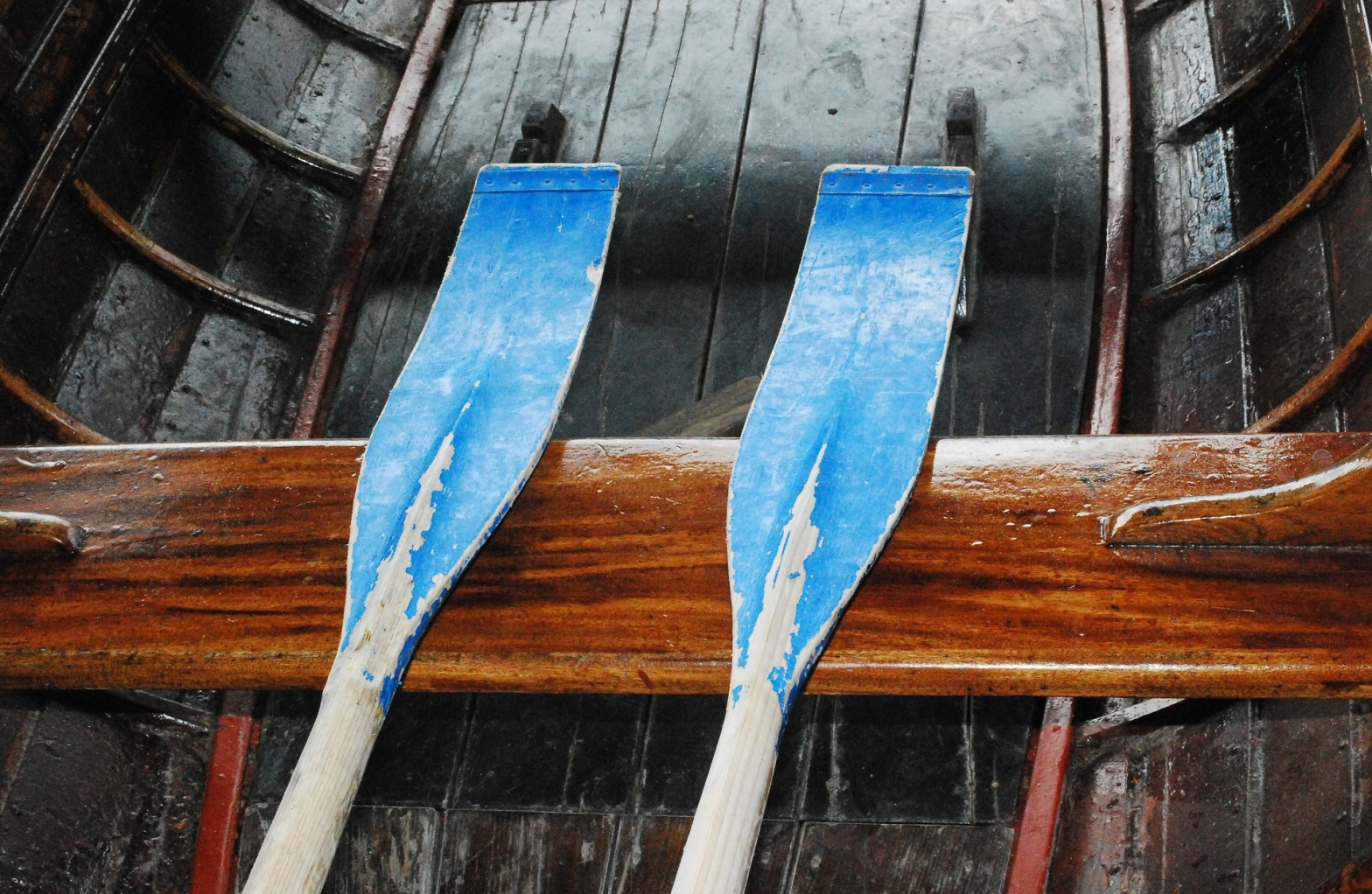
Introduction
Copyright©William Van Zyl – May 2020
Have you ever been rowing in a rowboat without a rudder? You paddle hard; however, you have no control over your direction. A proper rudder – with well-chosen oars – will make your work easy!
You won’t believe how simple it is to set goals and achieve them. It is just like rowing in a rowboat! The most important thing is making small marginal changes in the way you do things. How do you eat an elephant? The answer is piece by piece. Here – in this article – I will share with you what I have learned about achieving a personal goal.
My goal? To develop my sketching skills in my special notebooks, specifically using a fountain pen (black ink) and watercolours.
I love making notes and simple sketches in my notebooks. Quality paper and a hardcover notebook are essential to me. I love to feel a quality notebook in my hands. So, I have been on a journey to set a goal of making at least one watercolour sketch every 3 days. I have been at it for 6 weeks now.
I usually start with a pencil, followed by watercolours and then I use my black fountain pens. When I use ink, before applying watercolours, I use waterproof ink to reduce smudging.
I realised that I had to learn from somewhere. Therefore, I searched and discovered the blog of Liz Steel – https://www.lizsteel.com/ . I signed up, and now I receive notifications when she posts a new blog article or video. I also ordered a sketching book of hers (how to sketch/watercolours). Here is a sketch of her tools. She carries this with her when she goes out. I stay indoors when I sketch.
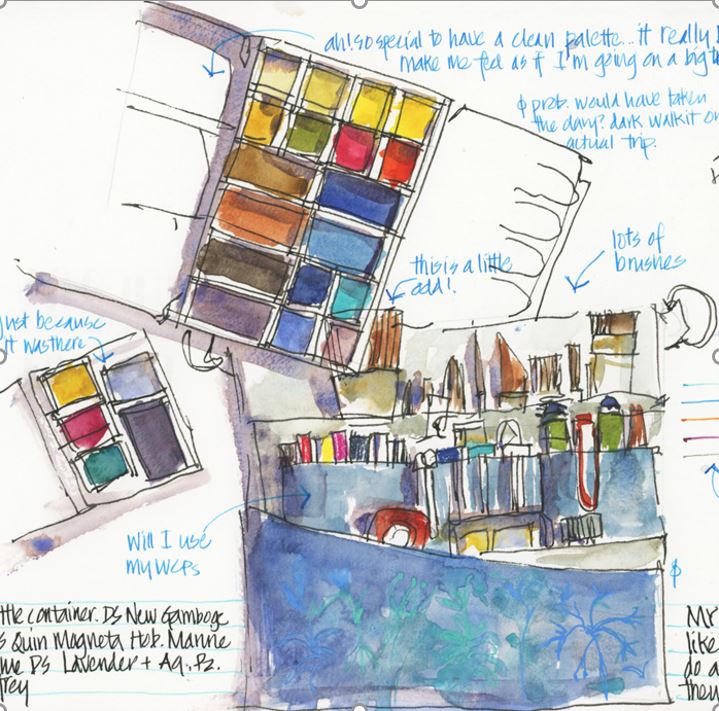
One doesn’t need that many art media to start off with. The basics will do; a soft pencil, a rubber, a fountain pen and a small set of watercolours is sufficient. And, of course watercolour paper (an A5 or smaller book is just fine). The important thing was that I had to commit to complete a sketch every 3 days. I have watched her videos and have spent a considerable amount of time learning. It was a focus of mine over the Covid-lockdown period. Well, I have developed my skills, and I will share one of my recent sketches with you. I am a beginner, though. The sketch is about a documentary that I have seen on the National Geographic/Discovery channel recently. The title of the documentary is “Rescued.” The compelling true story gripped my attention! For a couple of days, I thought about it, and then I planned a sketch. This is what I came up with for my sketchbook.
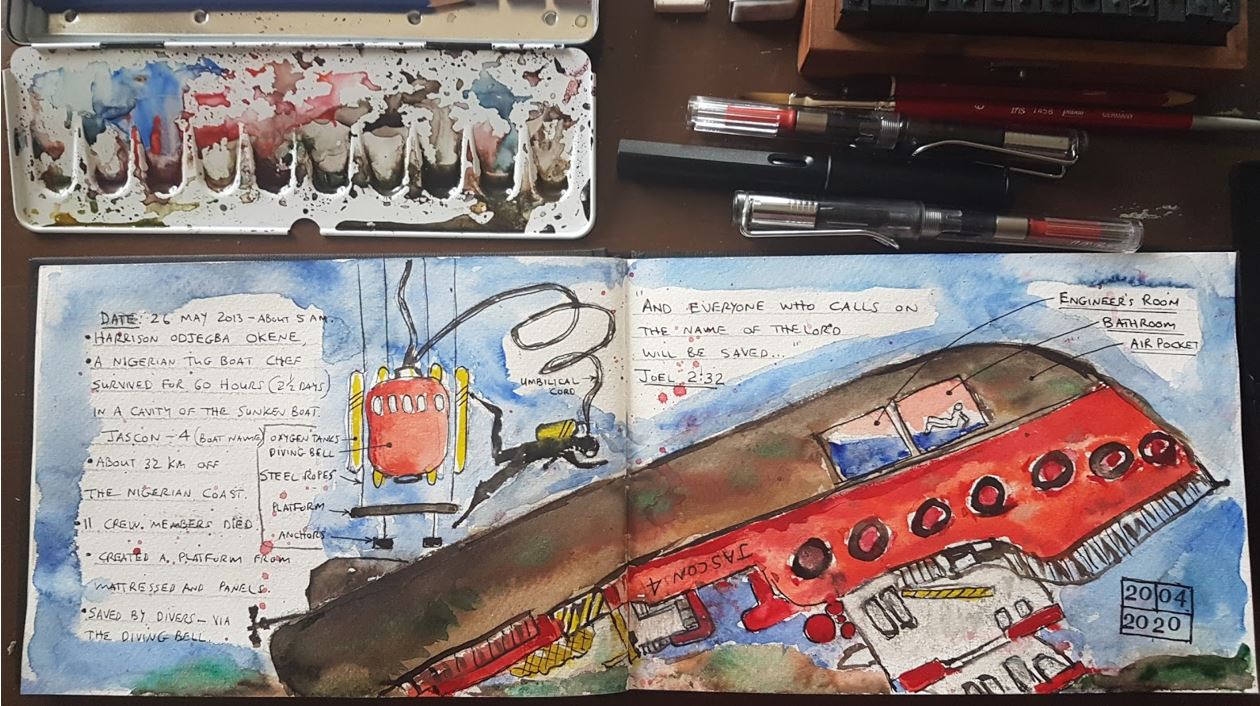
I have written an article on this amazing rescue:
I found this neat comparison of what goals look like and how to achieve them. Here is the comparison.
Rudders and Oars
Imagine a small rowboat. Your goals are like the rudder on the boat. They set the direction and determine where you go. If you commit to one goal, then the rudder stays put, and you continue moving forward. If you flip-flop between goals, then the rudder moves all around, and it is easy to find yourself rowing in circles.
However, there is another part of the boat that is even more important than the rudder, the oars (or paddles). If the rudder directs you to your goal, then the oars are the process for achieving it. While the rudder determines your direction, it is the oars that determine your progress. I decided to read the blog posts of Liz Steel, purchased the sketching book of Liz, and I watched her videos regularly. I have also practised sketching every 2 to 3 days, and now I have over 20 pages of sketches that I can show. By comparing drawings, I can see the progress I have made as a rookie up to now. I had to set my rudder, work those oars, and voila I have experienced success. I include a comment by James Clear.
James Clear makes an interesting observation in his article ‘Forget About Setting Goals. Focus on This Instead.’
Now for the interesting question: if you completely ignored your goals and focused only on your system, would you still succeed? For example, if you were a basketball coach and you ignored your goal to win a championship and focused only on what your team does at practice each day, would you still get results?
I think you would.
The goal in any sport is to finish with the best score, but it would be ridiculous to spend the whole game staring at the scoreboard. The only way to actually win is to get better each day. In the words of three-time Super Bowl winner Bill Walsh, “The score takes care of itself.” The same is true for other areas of life. If you want better results, then forget about setting goals. Focus on your system instead.
What do I mean by this? Are goals completely useless? Of course not. Goals are good for setting a direction, but systems are best for making progress. A handful of problems arise when you spend too much time thinking about your goals and not enough time designing your systems.’
After goal setting for many years, eventually, I began to realise that my results had very little to do with the goals I set. After analysing how the success came about, I discovered that nearly every goal I achieved was the result of the systems I followed. Probably the most essential system is to develop an attitude to complete things. To complete tasks, you have to be relentless. Work hard until the job is complete. Just the sheer exhilarating feeling of completion – whether it is a difficult task or not – is a motivator and catapults you into your next challenge. You will feel like a winner by just completing your goals. Do you want a test? If you receive a Maths problem and you complete it successfully, do you feel good? It that fulfilling to you? If your answer is yes, you have a ‘system’ in place called intrinsic motivation. Most people will experience successful thoughts and feelings upon completing the Maths problem. If you don’t, this is an area you could work on. Successful people will always work hard for intrinsic rewards. It distinguishes them from others. Importantly, don’t always set tough goals, also, set some easy ones. They are motivators! Teachers understand this principle – build the confidence of students with easy questions and then progress to more advanced ones.
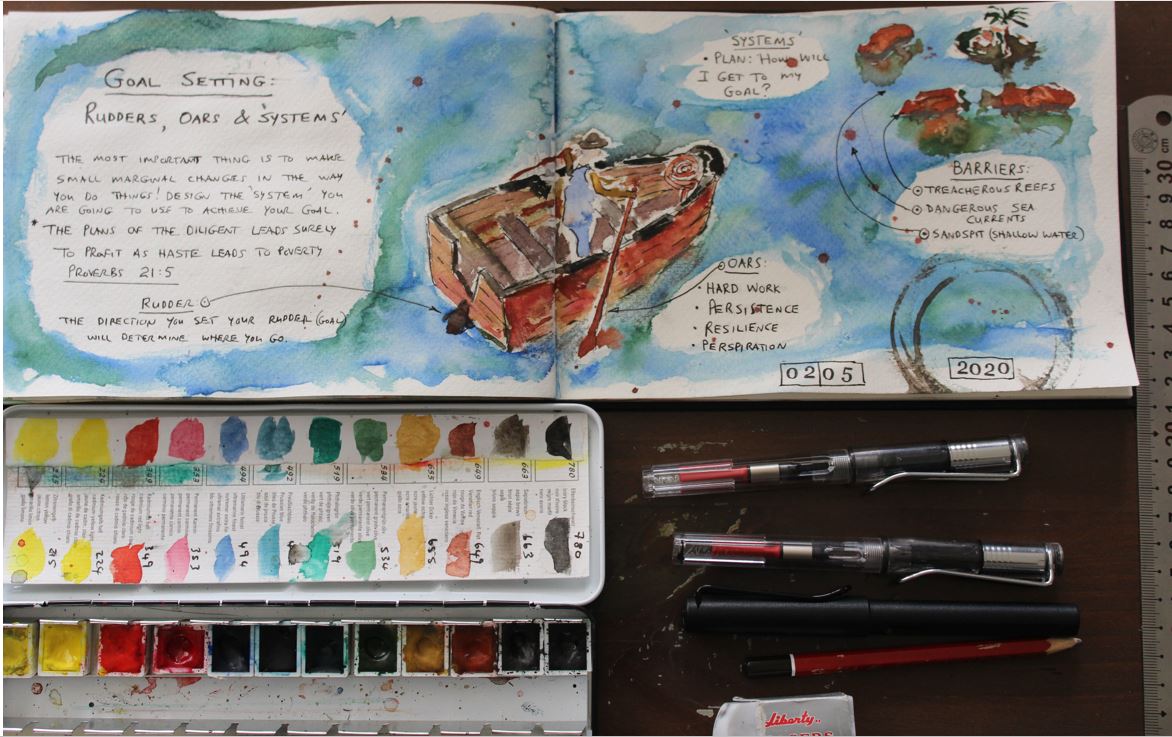
From my sketchbook: Ink and watercolour sketch – Setting goals. See the oars and the rudder with notes. Credit: Author May 2020.
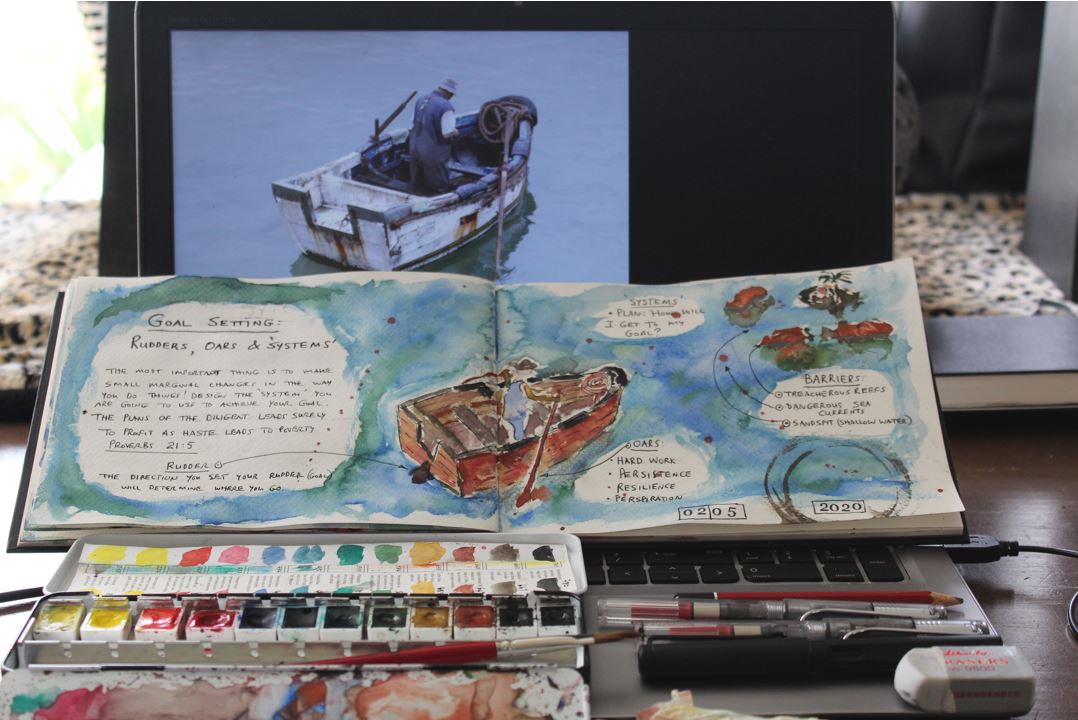
My sketchbook with inspiration in the background for the sketch. The inspiration for this sketch came from a fishing boat image (pixabay.com). It is a Moroccan fishing boat with oars. In the front of my sketch is some of my sketching equipment – ink pens (Lamy), watercolours (Schminke), pencil (6B) and a soft rubber.
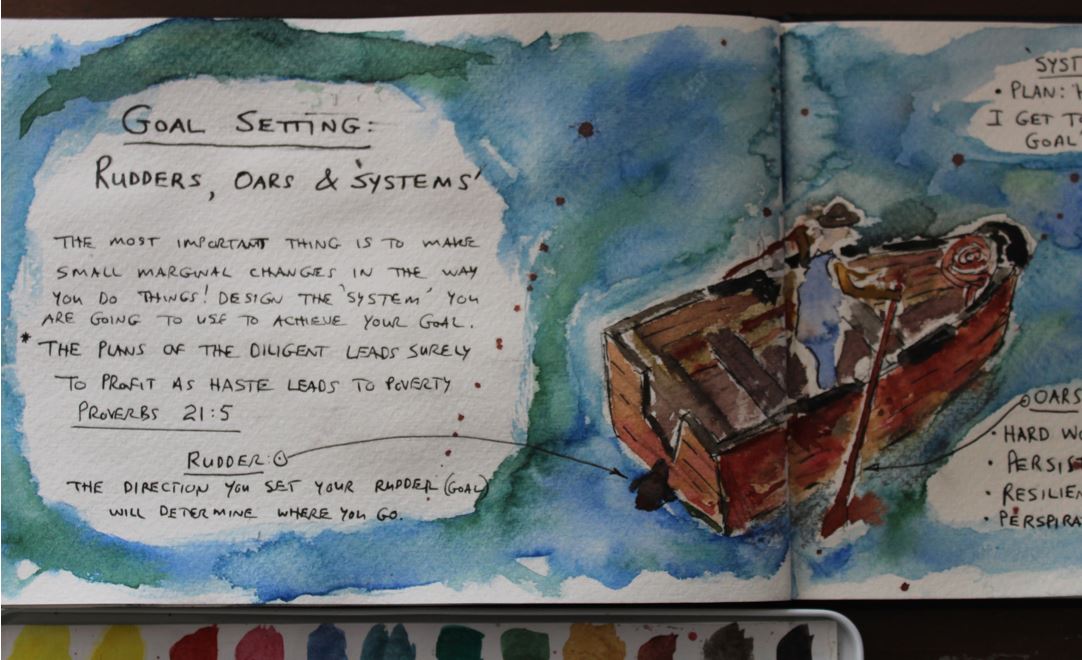
Sketchbook: Setting the rudder is important – it determines the direction you are going in. Making plans and setting goals – with hard work following – will surely pay off. Author May 2020.
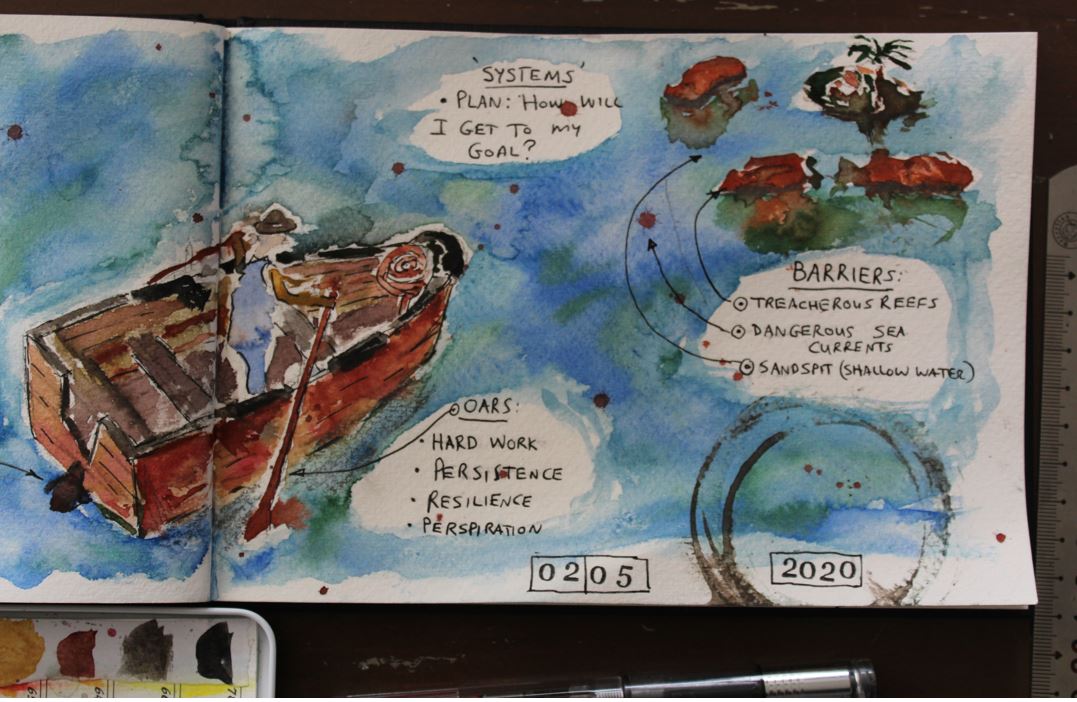
THE LAW OF MARGINAL INCREASE: BREAK DOWN THE ‘SYSTEM’ – IDENTIFY THE DIFFERENT PARTS – AND INCREASE BY 1%
Some people have been stunningly successful in achieving their goals. Their secret? Identify the small parts (analysing the system) and focus on improving only 1% in every area. The impact, and consequently, the results are tremendous.
This approach – “The aggregation of marginal gains” – is a very beneficial philosophy for goal setters. By searching for a tiny margin of increase in multiple areas, it will improve everything you do.
The whole principle of improving in small margins comes from the idea that if you break down everything you could think of, and work on it, it will guarantee success. For example – learning how to do great sketching in your notebook (including watercolours): break it down and analyse the ‘system,’ then improve each component by 1 percent. This approach will get you a significant increase or improvement when you put all the smaller parts together.
SETTING MY PERSONAL GOAL
As mentioned, I have set my goal as wanting to improve my sketching skills. I stuck to my goal over the lockdown period, and it paid off.
SYSTEMS
Let’s look at systems.
In relation to rudders and oars, your systems will be the shape of your boat, the size of the oars, the anchor, your navigation equipment, and the materials you choose for your boat (e.g. aluminium is light and don’t rust). Let’s translate this concept of systems to learning to create good sketches including watercolours (the example set by me). The quality of your equipment is vital (choice of materials), for example, quality watercolours and quality watercolour paper (sketchbook). You cannot achieve great results without quality equipment – a component of the system. The quality media will provide excellent results from the start, and it will motivate you. The time you set aside is valuable. The choice of ‘navigation equipment’ is critical to get you to your planned destination (excellent sketches in your sketchbook). It means the artists you choose to study (their blogs and videos) and the textbooks you purchase is your navigation tools. Poor choices will have poor results. Therefore, as you can see, it is a combination of many small components (decisions), which contributes to success.
The next element in the system is to reduce distractions. Remove things that will steal your precious time. For example, spending lots of time on social media (mobile phone), television, and so on. A sound system is to get up from the tv and go to your sketchbook. Use headphones to watch the sketching tutorials. Switch you phone off and go to your sketchbook. You get the idea on how to create new systems. We call it habits. Change your practices, and you will set yourself up for success.
Now it is your turn. Reflect. Choose a goal and the systems you are going to use. Set your rudder, choose your operations, and work those oars! Don’t be distracted. See the brilliant video on goal setting by Stephen Duneier below.
ADDITIONAL:
I share one of my favourite videos with you: TED Talk
How to Achieve Your Most Ambitious Goals | Stephen Duneier |
In this story, Stephen Duneier shares how he achieves his goals. He decided to learn a new language – German. He removed all distraction and listened to 99 cd’s – thrice – on his way to work and back. Then he attended a German language course. He successfully learned to speak German. He then went on to achieve even bigger goals – see the video.
In other words, he set his rudder, focused on the systems, and he worked those oars. As we all know, success requires perspiration! Now it’s your turn – what is your next goal?
References:
Rudders and Oars
Copyright © 2020 by William Van Zyl
Rudders, Oars, and ‘Systems’ for Goal Setting.
All rights reserved. This book/article or any portion
thereof may not be reproduced or used in any manner
whatsoever without the express written permission of the
publisher except for the use of brief quotations in a book review.
Published by Five House Publishing (New Zealand)
First Publishing, 2020
More to read:

More lessons, e-books, and articles: https://fivehousepublishing.com/
More about the author: http://williamvanzyl.com/